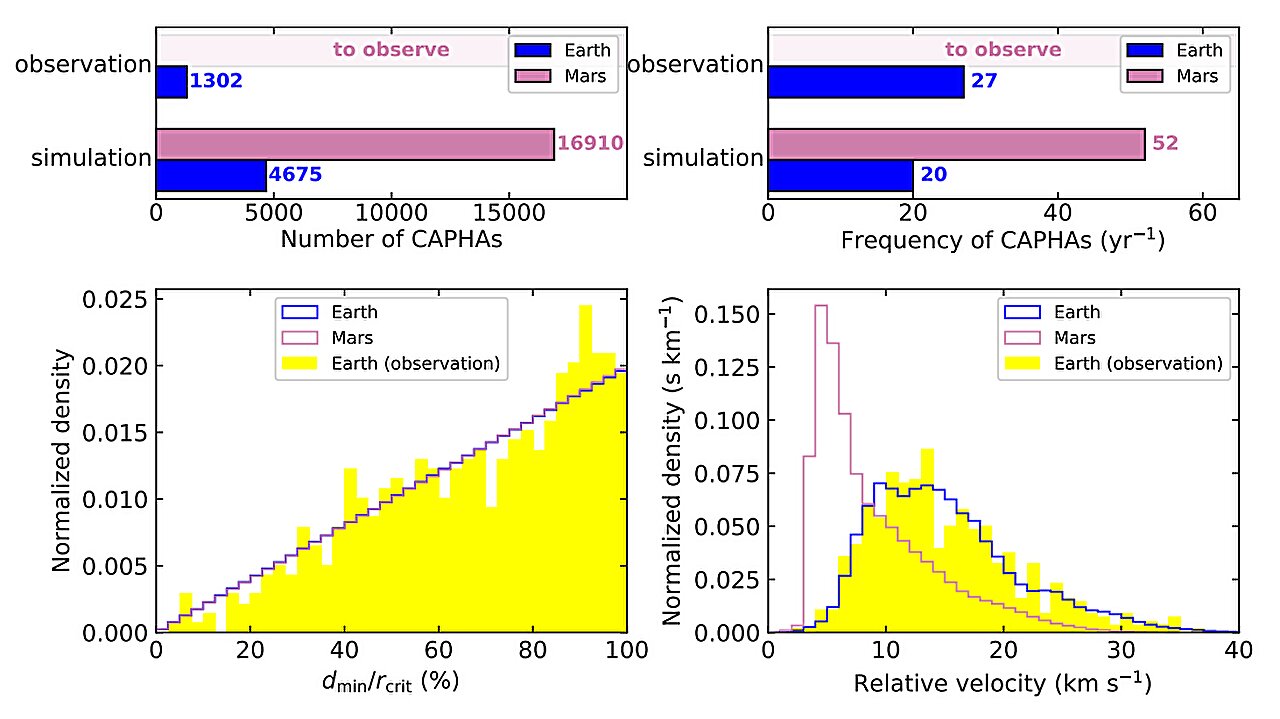The European Space Agency’s (ESA) Planetary Defence Office is investigating the appearance of an enormous fireball that lit up the sky above Spain and Portugal late last week. The fiery body was witnessed streaking across the night sky traveling at a speed of roughly 45 kilometres per second at 22:46 UTC on May 18, before disappearing from view in a bright flash of light at an altitude of 60 km above the Atlantic Ocean.
The fireball was initially thought to have marked the destruction of a small meteor as it came into contact with Earth’s atmosphere. However, ESA later announced that the interloper was in fact probably a fragment of a larger icy comet, which had broken off from the main body and wandered the solar system for an indeterminate period of time before finding itself on a fateful collision course with our Blue Marble.
Footage of its explosive destruction was posted to social media by observers located in Spain, and Portugal, along with a recording from ESA’s fireball camera in Cáceres, Spain.
☄️😍 ESA’s fireball camera in Cáceres, Spain, spotted this stunning meteor last night!
Our Planetary Defence Office are currently analysing the size and trajectory of the object to assess the chance that any material made it to the surface.
Credit: ESA/PDO/AMS82 – AllSky7 pic.twitter.com/gSU4unncQW
— ESA Operations (@esaoperations) May 19, 2024
During atmospheric entry, the intense velocity of the comet fragment would have compressed the atmospheric gases in its path — a process which in turn would have slowed the object, and heated it up simultaneously. Its descent would have continued until the unequal pressures at the front and back of the fragment overwhelmed its tensile strength, causing the ancient traveller to disassemble in a cataclysmic fireball.
ESA’s Planetary Defence Office is currently analyzing data on the fragment to determine its size, and trajectory, in an effort to discern whether any part of the cosmic wanderer could have survived to splash down in the Atlantic Ocean. Researchers are also working to determine whether the object – which was not being actively tracked prior to striking Earth’s atmosphere — can be found in telescopic data leading up to the event.
This girl captured the COOLEST video of the meteor that fell in Portugal ☄️ pic.twitter.com/NrunWrVGcS
— Nature is Amazing ☘️ (@AMAZlNGNATURE) May 20, 2024
Another incredible view of the meteor/fireball last night seen from Cádiz in Spain ☄️🤩pic.twitter.com/vVGmnqlulN
— Volcaholic 🌋 (@volcaholic1) May 19, 2024
🚨BREAKING: Incredible view of a meteor/fireball across Spain/Portugal a little while ago! ☄️
— Live Storm Chasers (@LiveStormChaser) May 19, 2024
Meteor/fireball flashes across night sky over Portugal just now pic.twitter.com/p7n6h4uLZ7
— WORLD CULTURE 🌐 (@pedestrian) May 19, 2024
Sunday’s unexpected occurrence is the latest in a string of spectacular cosmic events that have graced Earth’s skies in 2024, starting on April 8 with a dramatic total eclipse that swept across a swathe of North America, bathing the land in lunar shadow. That display of orbital mechanics was followed earlier this month by a bout of intense solar activity, which triggered a series of spectacular aurora’s on Earth, which lit up the night sky across the Northern United States.
Astronomers have also predicted that the distant white dwarf star T Coronae Borealis will explode in a powerful nova explosion later this year, which will render it visible from Earth for the first time since 1946. For more science news, why not catch up on the discovery of an ancient waterway that linked 31 ancient Egyptian pyramids, or read up on how a piece of the International Space Station came to smash through the roof of a Floridian family’s home earlier this year.
Image credit: ESA/PDO/AMS82 – AllSky7 Fireball Network
Anthony is a freelance contributor covering science and video gaming news for IGN. He has over eight years experience of covering breaking developments in multiple scientific fields and absolutely no time for your shenanigans. Follow him on Twitter @BeardConGamer

Dr. Thomas Hughes is a UK-based scientist and science communicator who makes complex topics accessible to readers. His articles explore breakthroughs in various scientific disciplines, from space exploration to cutting-edge research.







